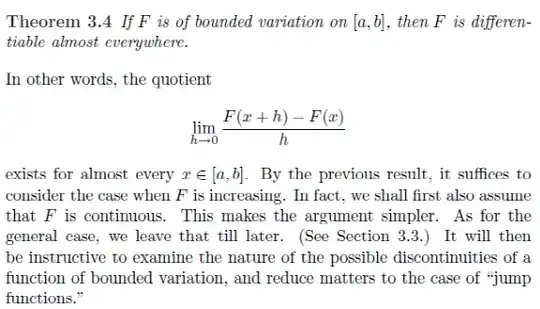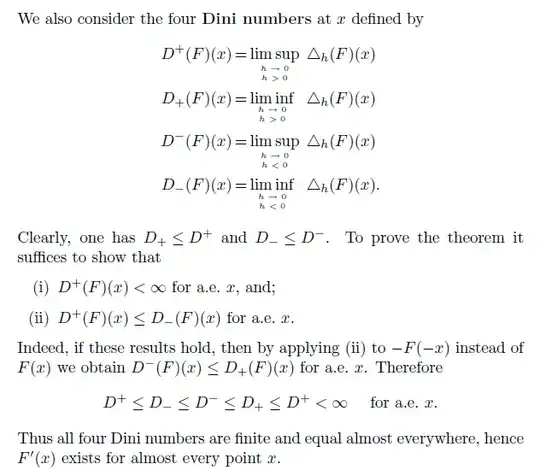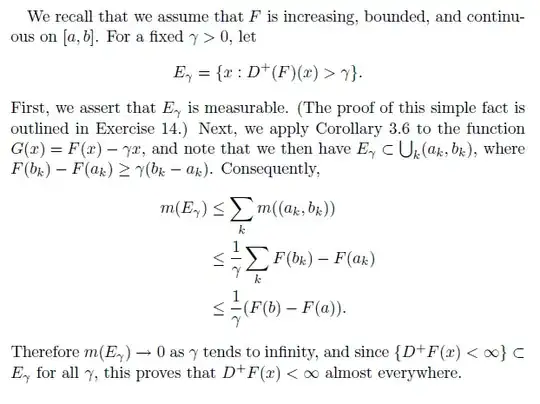1st question This question is the subsequent one from the link. This question is asking about $E_\gamma$ more in detail. Let me post the proof of theorem 3.4
(1) In the last part of the proof is the expression $\{D^+F(x) < \infty\}$. Assuming this to be same as $E_{\infty} = \{x \in \mathbb R | D^+F(x) < \infty\}$, I don't understand why $E_{\infty} \subset E_\gamma$ for all $\gamma$. If such inequality is valid, then my interpretation is that there is no such point $x \in \mathbb R$ that $D^+F(x) \le \gamma$. I'm not sure whether this interpretation is correct, and if so, how can I guarantee the absence of such point? In other words, why there is no possibility that a $\limsup$ of a function can be a value less than or equal to $\gamma > 0$?
(2) The proof says $E_\gamma$ is measurable, which is same as $D^+(F)$ is measurable function, without any proof. Is the set $E_\gamma$ measurable because it's open set? If so, how should I associate this with $\limsup \Delta_{h}(F)(x)?$ The proof would be easy if the function $D^+(F)$ is countinuous, but there is no conditions that makes the function continuous. The only hint about this is in the exercise 14(a) : The continuity of $F$ allows one to restrict to countably many h in taking the limsup (I guess this is consistent with PMA's theorem 4.2).
Any help would be greatly appreciated. Thank you.



